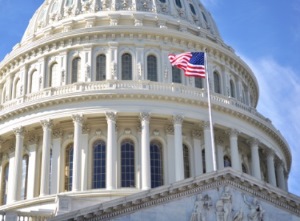
By Thomas Mangan
CEO, United Benefit Advisors
The Government Sector has always been much more generous with employee benefits, but in 2013, it appears public employers loosened their purse stings even further to compensate for recent pay freezes. Newly released results from the 2013 UBA Health Plan Survey show that while private sector employees are absorbing more costs for their own health care, facing high deductibles and huge out-of-pocket cost increases in recent years, public employees saw their employers pay three times more toward their benefits. Unfortunately, this means private employees were hit from both sides — as taxpayers, they picked up the tab by assuming a higher percentage of costs for employees in the public sector.
Findings also show that the private sector has controlled costs better than public employers by using plan designs that shift more up-front cost to employees, a strategy proven to decrease total cost.
In 2013, public employer cost per employee increased 22 percent from $7,001 in 2012 to $8,551 in 2013, while employer cost in the private sector increased only 15.8 percent from $5,226 in 2012 to $6,040 in 2013. The portion an employee pays decreased for both during that same time period, but by nearly 30 percent (or $1,025) for a public worker and only 15.7 percent for a private worker. Taxpayers, therefore, assumed an additional $1,681 or 24.28 percent of a public employee’s health care cost.
While much of the private sector has moved to consumer-driven health plans (CDHPs), which grew from 22.5 to 24.1 percent of all plan types offered across all industries and size groups, a majority of public plans are still considered “Cadillac plans,” rich in costly benefits that have been stripped from most private plans — putting the public sector at risk of facing the forthcoming “Cadillac Tax.”
Under the Patient Protection and Affordable Care Act (PPACA), plans that cost more than $10,200 for individuals and more than $27,500 for families will face a 40 percent tax on the amount over the threshold.
When the Cadillac Tax takes affect in 2018, almost all local and state governments will face huge penalties unless they get their costs under control. For example, the average municipality in Illinois and Massachusetts will pay $5,000 per employee in 2018. By 2020, the penalty for family coverage will skyrocket to $9,202 in Illinois and $19,699 in Massachusetts. Unfortunately, those penalties are passed to taxpayers facing their own health care cost increases.
Other notable differences between public and private health plan designs include:
- Private employees with dependents have been hit hardest, where the average annual premium (employee contribution) has increased by 1.5 percent since 2012 and 19.7 percent since 2009. A public worker, however, actually saw their annual contribution for dependents decrease by 3.05 percent from $4,716 in 2012 to $4,572 in 2013.
- Total Cost of Employer-Sponsored Health Plans has increased at a rate of 21 percent, on average, for both public and private industry for the past five years; however, the private sector has better controlled costs in recent years. Annual Total Cost for the public sector increased from $10,356 in 2012 to $10,914 in 2013, a 5.4 percent increase. In the private sector, however, Annual Total Cost increased only 2.8 percent in the same time period, from $9,032 to $9,282 in 2013.
- Out of Pocket Maximums (OOP) are much higher in the private sector, with the average worker facing an in-network OOP maximum of $3,721 for a single adult and $8,258 for a family, versus a public sector worker who faces an in-network OOP maximum of only $2,262 for a single adult and $6,032 for dependents. The differences in out-of-network OOP maximums is even more extreme, with a private worker facing a family maximum nearly $5,000 higher than that of a public worker.
- Deductibles are another area where private employees face higher up front costs. The average in-network deductible for a public employee in 2013 was $1,356 for a single adult and $3,064 for a family; a private employee will pay $1,891 for a single adult and $4,323 for a family, a nearly 40 percent difference for each.
- Average in-network co-insurance dropped from 90 percent to 82.5 percent for private employees (a significant decrease), but remained at 90 percent for the public sector.
Request a copy of the 2013 UBA Health Plan Survey online or contact a local UBA Partner for a customized benchmarking report.

